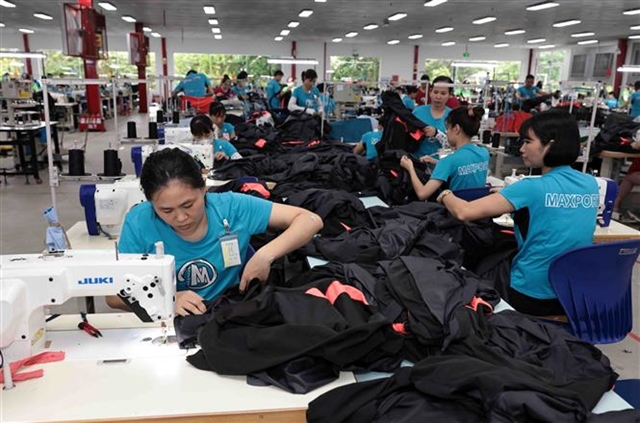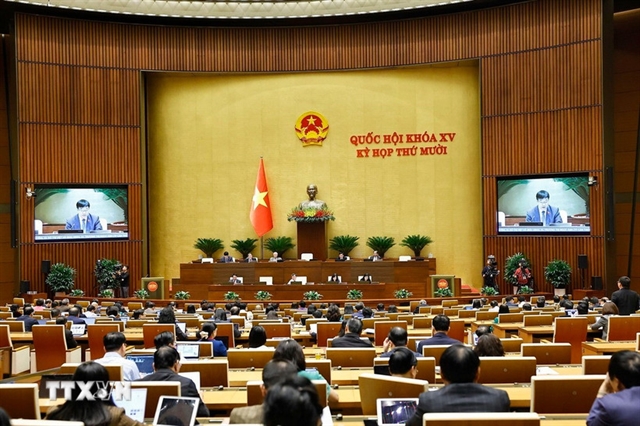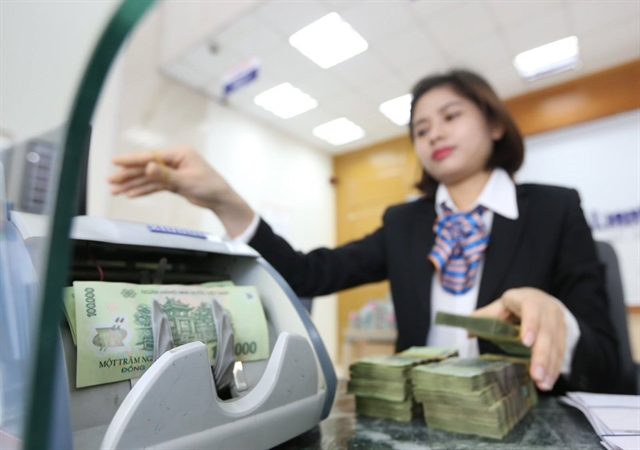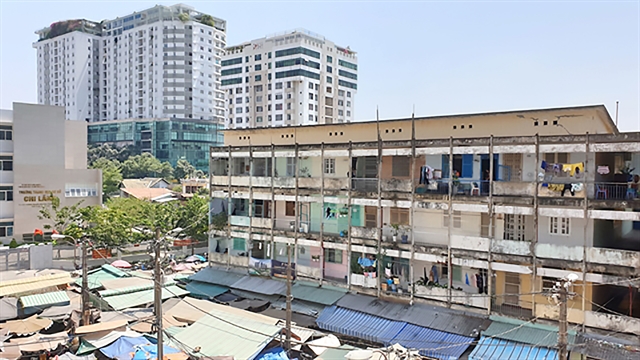 Economy
Economy

 |
| Producing apparel for export at a factory in Nam Định Province. — VNA/VNS Photo |
HÀ NỘI — The General Statistics Office (GSO) has released its January socio-economic report, highlighting key indicators showing steady growth which set the positive tone for the year ahead.
Positive growth indicators
According to the GSO, the consumer price index (CPI) in the month rose by 3.63 per cent year-on-year, indicating stable supply, demand, and commodity prices. Meanwhile, State budget revenue reached 14 per cent of the annual target, up 3.5 per cent from the same period last year.
Foreign direct investment (FDI) also saw a remarkable surge, with registrations exceeding US$4.3 billion, a 48.6 per cent increase from the same period last year. Disbursed FDI climbed by 2 per cent, reaching over $1.5 billion.
On the domestic front, industrial production grew modestly, by 0.6 per cent, while retail sales of goods and consumer services soared by 9.5 per cent year on year.
Despite these achievements, Deputy Minister of Planning and Investment Trần Quốc Phương gave a note of caution. He pointed out two major hurdles, namely ambitious growth targets for 2025 and lingering uncertainties in the global economy.
Trade data highlighted several concerns. While domestic purchasing power and Lunar New Year (Tết) Holiday consumption, though improved, remained below the pre-pandemic levels during 2018 and 2019 Tết.
Total trade declined by 10.5 per cent month-on-month and 3.5 per cent year-on-year. Exports dipped by 4.3 per cent, and imports dropped by 2.6 per cent. While the trade balance recorded a surplus of $3.03 billion, import turnover plummeted by 14.1 per cent monthly and 2.6 per cent year on year.
Exporters face mounting pressure as key markets like the US tighten trade policies and adopt protectionist measures. Unpredictable tariffs and heightened competition are making it tougher for Vietnamese businesses to thrive abroad. Domestically, sluggish global recovery adds another layer of complexity.
Breakthrough solutions needed to achieve growth target
To achieve the 8 per cent economic growth this year, Phương said comprehensive solutions across all sectors have been outlined in the Government’s Resolution 01.
This requires all ministries, agencies and localities to act at a significantly higher level, even doubling the current pace. Each individual and unit must work at twice their current productivity to meet the new growth target, Phương stressed.
According to the official, the Ministry of Planning and Investment proposed prioritising the completion of the legal framework, closely following the Party Central Committee and the Prime Minister’s directives. The ministry stressed that institutional reform should be a critical resource for development and regarded as the “breakthrough of breakthroughs.”
The ministry called for the swift and drastic restructuring of organisational apparatuses to ensure streamlined and efficient operations. It also highlighted the need to promptly issue decrees, detailed guidelines for enforced laws and resolutions recently passed by the National Assembly at its 8th session, including those related to public investment and finance.
Local authorities have been urged to adopt drastic and comprehensive measures to boost production and trade. This includes reinforcing traditional growth drivers such as investment, consumption, and exports, while fostering new growth drivers and advancing modern production forces. Strengthening regional linkages and maximising the effectiveness of regional coordination councils are also key priorities.
Maintaining macroeconomic stability and ensuring the major economic balances remain critical. Authorities were advised to closely monitor developments, enhance forecasting capabilities, and coordinate macroeconomic policies effectively and harmoniously. Proactive planning to address potential challenges early is essential for minimising risks.
The Government should focus on a few core tasks, with investment acceleration taking a centre stage. Investment, long recognised as a vital growth driver with immediate economic impacts, is expected to play a pivotal role, he said.
Deputy Governor of the State Bank of Việt Nam Đào Minh Tú underscored the importance of aligning monetary policy with growth objectives, saying that monetary policy must prioritise inflation control and currency stability. Additionally, it must actively support growth while maintaining major economic balances. Flexibility and close co-ordination with fiscal and trade policies will be key to navigating the road ahead. — VNS




